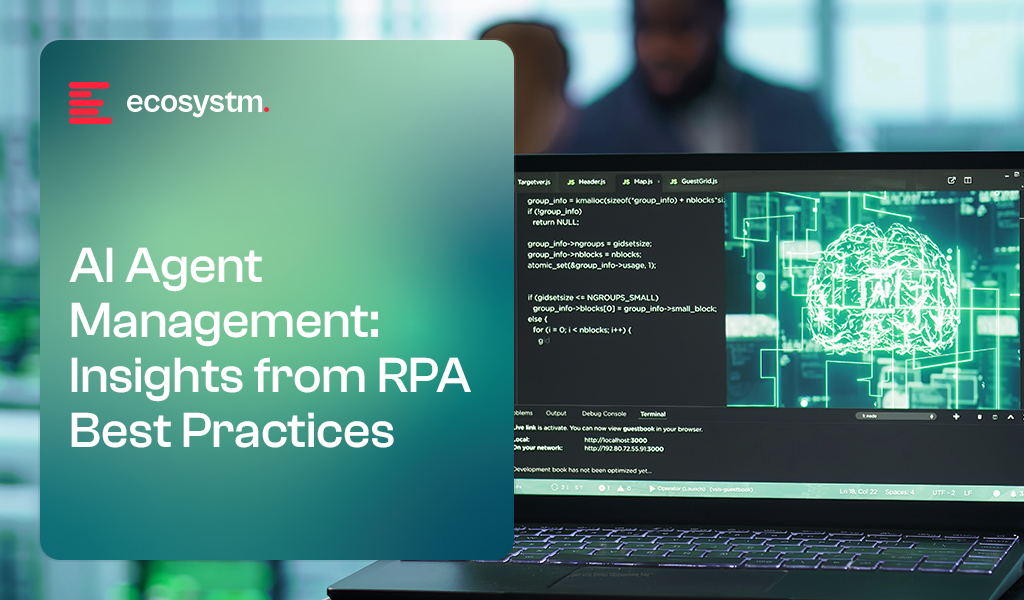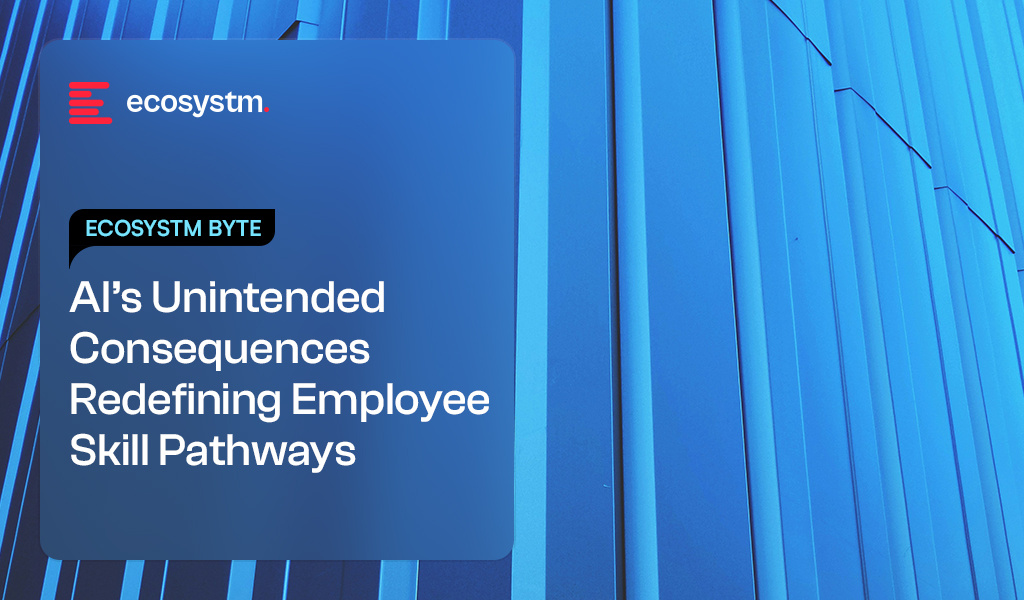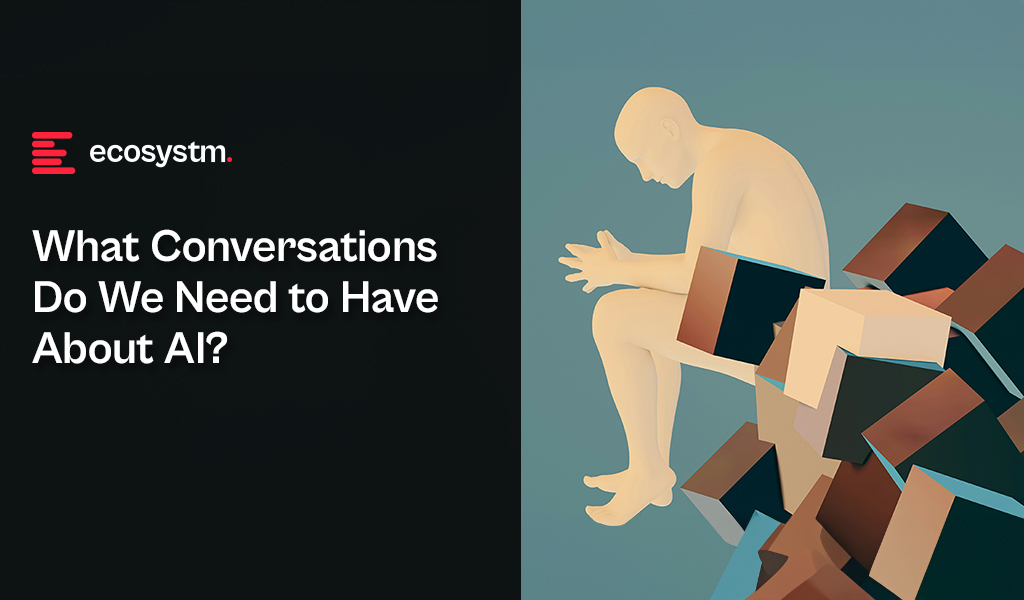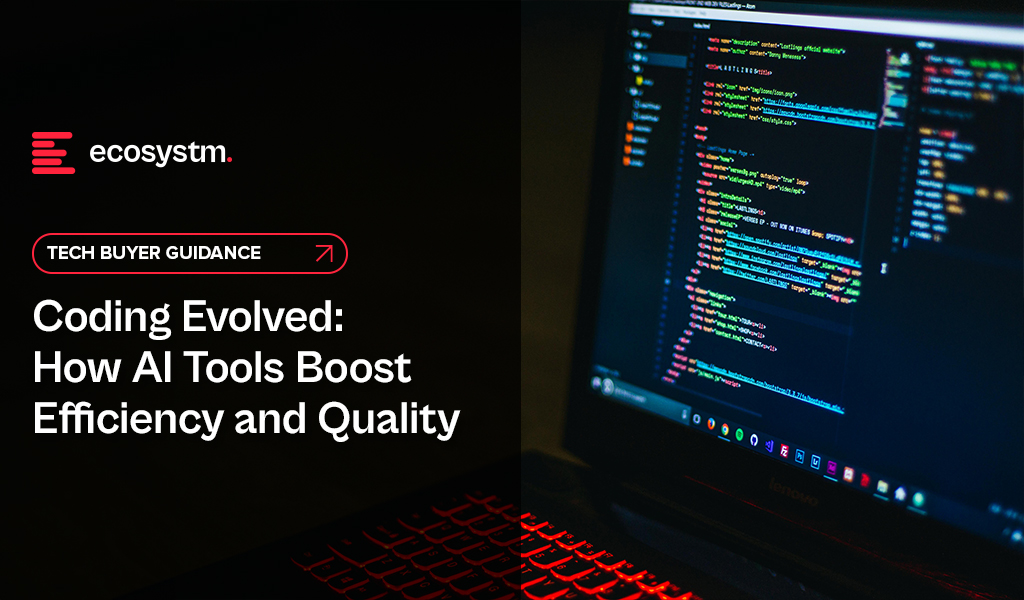Thailand’s digital transformation has shifted from an ambitious policy agenda to a national necessity. As the country accelerates its Thailand 4.0 strategy, digital platforms are becoming central to boosting competitiveness, enhancing public services, and building economic resilience. From logistics and healthcare to finance and manufacturing, digital tools now underpin how Thailand moves, heals, pays, and grows.
Recent reforms, including the National AI Strategy, Smart City Masterplan, and National Digital ID framework, have been paired with efforts to strengthen digital infrastructure nationwide. Yet challenges remain: integrating platforms across government, closing the generational digital divide, and safeguarding vulnerable users in a rapidly evolving fintech and gig economy.
Through multiple roundtables and stakeholder dialogues, Ecosystm has uncovered five core themes that highlight both the momentum and the friction points in Thailand’s digital journey.
Theme 1: Bridging the Regional Divide
Thailand’s digital transformation is accelerating in urban centres like Bangkok, Chonburi, and Rayong, but rural and low-income regions, especially in the North and Deep South, continue to lag. Gaps in connectivity, digital skills, and modern technical education are limiting access to online learning, mobile banking, and digital public services, while also holding back the growth of tech-driven industries.
Initiatives like Net Pracharat have brought broadband to over 75,000 villages, and new investments in regional data centres and telecom infrastructure show promise. Still, last-mile gaps and fragile networks persist, particularly in conflict-affected or underserved areas. Even where fibre is available, unstable connections often block meaningful digital adoption.
At the same time, Thailand’s push into future-focused industries such as EVs, semiconductors, AI, and smart logistics, is straining its talent pipeline. The Eastern Economic Corridor (EEC) is attracting major investment, but the demand for skilled workers in data science, cybersecurity, and industrial AI far exceeds supply. Many regional technical education systems have not kept pace, widening the skills gap.
To ensure inclusive growth, Thailand needs to pair infrastructure investment with targeted reskilling and education reform. Programs like the Digital Skill Development Academy and revamped TVET initiatives are important first steps; but broader progress will require stronger industry-academia partnerships, faster certification pathways, and universal access to digital learning.
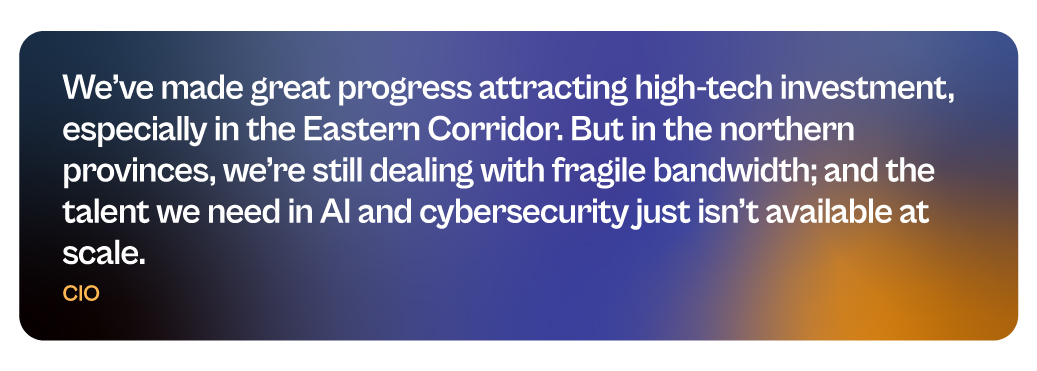
Theme 2: Unifying Government Services for a Seamless Citizen Journey
From PromptPay-linked welfare payments and Mor Prom for health services, to the rollout of the NDID (National Digital ID), Thailand has made considerable progress in digitalising public services. Citizens can now access more services online than ever before.
However, many of these systems still operate in silos, with duplicated citizen data, separate logins, and limited backend integration between agencies. Ministries and local governments often lack the interoperability standards and cloud infrastructure needed to provide seamless, real-time services.
The next phase of government digitalisation must focus on platform-level integration, supported by secure data sharing frameworks, API-first design, and privacy-by-default policies. The goal is to move from digitising transactions to building a citizen-centric, connected state, where services are proactive, mobile-friendly, and unified across domains.

Theme 3: Strengthening Public Trust Through Proactive Cybersecurity
With the rise of digital government, cloud adoption, and cashless ecosystems, Thailand’s attack surface is rapidly expanding. High-profile breaches in healthcare, telecom, and finance have triggered growing public concern around data misuse, fraud, and infrastructure vulnerabilities.
The government has enacted the Cybersecurity Act (2019) and PDPA (2022), and agencies like the National Cybersecurity Agency (NCSA) are stepping up threat monitoring. But cybersecurity maturity across sectors remains uneven. Many SMEs, regional hospitals, and even provincial government systems operate with limited threat intelligence and minimal incident response protocols.
Cybersecurity must now move from compliance to strategic resilience. This includes building sector-specific response plans, launching cyber drills in critical infrastructure, and scaling cyber talent development across the country. Trust in digital services will depend not just on what’s offered, but on how securely it’s delivered.

Theme 4: Scaling Trust Through Local Language, Visibility, and Human Oversight
AI systems in Thailand are increasingly interfacing with the public, from chatbots and digital assistants to automated approvals and diagnostics. However, public trust in these systems remains fragile, particularly when users cannot understand how decisions are made or get help when things go wrong.. Language barriers and unclear design only add to the uncertainty.
Many AI tools are built in English-first environments, with limited Thai-language optimisation or cultural context. In rural areas or among older populations, this can create friction and resistance, even when the underlying system works well. Without transparency, user control, or recourse, AI tools risk being seen as alienating rather than empowering.
To build public confidence, AI deployments must prioritise explainability, Thai-language usability, and built-in pathways for human support. This includes interface localisation, clear model intent statements, and fallback mechanisms. Trust will not be built through performance alone, it must be earned through transparency, accessibility, and responsiveness.

Theme 5: Embedding Governance to Sustain Smart Urban Growth
Thailand has made significant headway in its smart city development agenda, with over 30 provinces participating in the national Smart City program. Flagship initiatives in Phuket, Chiang Mai, Khon Kaen, and parts of the EEC have introduced smart traffic systems, e-governance tools, environmental monitoring, and digital tourism platforms.
However, many smart city projects are still pilots, driven by local champions, reliant on short-term grants, and lacking long-term governance structures. Fragmented data, unclear stakeholder roles, and limited collaboration between cities continue to slow scale and national replication.
The Smart City Office under DEPA is working to address these challenges by developing standard frameworks, urban data platforms, and public-private investment models. To maintain momentum, Thailand will need to embed smart city governance in multi-year digital urban strategies, establish shared infrastructure foundations, and invest in capacity-building for local leaders.
For smart cities to succeed, they must move beyond tech demonstrations and deliver real, lasting improvements in liveability, safety, and economic opportunity.

Sustaining Momentum in a Connected Nation
Thailand’s digital future won’t be defined by policy or technology alone; but by how effectively the country aligns infrastructure, skills, services, and trust at scale. The foundations are already being built in classrooms, city halls, data centres, and boardrooms. The real opportunity lies in weaving these efforts into a cohesive, resilient digital fabric. Lasting impact will come not just from momentum, but from turning vision into everyday value for people, communities, and businesses alike.

The education sector is evolving rapidly, driven by technological innovation and shifting societal needs. This transformation extends beyond digitisation, requiring a fundamental rethink of how students and employees engage. AI-driven personalisation, immersive virtual environments, and data analytics are reshaping curricula, teaching strategies, and operational efficiency.

Here are recent examples of transformation across the Asia Pacific.
Click here to download “Future Forward: Reimagining Education” as a PDF.
Streamlining Service Delivery
Griffith University struggled with fragmented systems and siloed information, leading to inconsistent service and inefficiencies. Managing support for over 45,000 students became unsustainable, demanding a streamlined solution.
By adopting an enterprise service management platform, Griffith consolidated multiple portals into a single system, automating ticketing, request management, and AI-driven self-service.
Starting with library services, the transformation expanded across IT, HR, legal, and other functions, improving accessibility and collaboration. The impact was immediate: self-service surged by 87%, first-contact resolution jumped by 43%, and incident resolution time dropped by 25%. Call volume fell 31% and email inquiries 46%. Now scaling the platform university-wide, Griffith is streamlining service for students and staff.
AI for Recruitment & Content
The Indian Institute of Hotel Management (IIHM) sought to improve recruitment efficiency and enhance educational content creation. Manual hiring processes were slow and inconsistent, while developing high-quality learning materials was resource-intensive.
IIHM implemented an AI-driven platform to automate candidate assessments and generate accurate, engaging educational content.
This transformation cut interview times by half, improved hiring precision to 90%, and boosted student job placements by up to 30%. AI-generated materials reached 95% accuracy, creating a more effective learning experience. With stronger recruitment and enriched education, IIHM continues to reinforce its leadership in hospitality training.
AI-Accelerated Research
La Trobe University sought to harness GenAI to streamline research operations and accelerate market entry. Researchers faced challenges in accessing university-approved knowledge efficiently, while limited development capabilities slowed the commercialisation of research findings.
By implementing a retrieval-augmented generation (RAG) system, La Trobe enabled rapid, AI-powered access to research data, initially tested on autism studies.
Simultaneously, the university co-developed an AI-driven application to transform research into market-ready solutions faster. AI-driven development reduced time from months to weeks, with core components built in under a week. By leveraging in-house AI tools, La Trobe achieved an 8.7x cost reduction compared to outsourcing. This initiative positioned the university as a leader in AI-driven innovation, bridging the gap between academia and industry.
AI-Driven Personalisation
BINUS University aimed to future-proof its operations and student learning experiences. With GenAI reshaping education, the university sought to integrate AI into administration and teaching to boost efficiency and deliver adaptive, personalised learning.
BINUS has integrated AI across key areas, driving efficiency and personalisation.
AI-powered student intake predictions have reached 90% accuracy, optimising resource allocation across 14 campuses. GenAI automates Diploma Supplement Document (DPI) creation, reducing manual effort and improving accuracy. AI enhances the library system with personalised book recommendations and powers the AI Tutor for faster, tailored academic feedback. AI-driven language learning platforms further boost student engagement.
Unified Digital Workflows
Western Sydney University (WSU) faced inefficiencies from over 32 shared email addresses and paper-based forms, causing delays, poor inquiry tracking, and complicated administration – hindering timely, effective support.
WSU launched WesternNow to replace outdated systems with a unified digital platform, streamlining service requests, enhancing case tracking, cutting manual processes, and improving the user experience for students and staff.
This made WSU’s service delivery more responsive and efficient. The platform drastically improved efficiency, cutting request logging time from over 4 minutes to seconds. Staff tracked and resolved cases seamlessly without sifting through emails. Workflow digitisation eliminated most paper forms, saving time and resources, while consolidating forms into services reduced their number by 40%.

The promise of AI agents – intelligent programs or systems that autonomously perform tasks on behalf of people or systems – is enormous. These systems will augment and replace human workers, offering intelligence far beyond the simple RPA (Robotic Process Automation) bots that have become commonplace in recent years.
RPA and AI Agents both automate tasks but differ in scope, flexibility, and intelligence:

7 Lessons for AI Agents: Insights from RPA Deployments
However, in many ways, RPA and AI agents are similar – they both address similar challenges, albeit with different levels of automation and complexity. RPA adoption has shown that uncontrolled deployment leads to chaos, requiring a balance of governance, standardisation, and ongoing monitoring. The same principles apply to AI agent management, but with greater complexity due to AI’s dynamic and learning-based nature.
By learning from RPA’s mistakes, organisations can ensure AI agents deliver sustainable value, remain secure, and operate efficiently within a governed and well-managed environment.
#1 Controlling Sprawl with Centralised Governance
A key lesson from RPA adoption is that many organisations deployed RPA bots without a clear strategy, resulting in uncontrolled sprawl, duplicate bots, and fragmented automation efforts. This lack of oversight led to the rise of shadow IT practices, where business units created their own bots without proper IT involvement, further complicating the automation landscape and reducing overall effectiveness.
Application to AI Agents:
- Establish centralised governance early, ensuring alignment between IT and business units.
- Implement AI agent registries to track deployments, functions, and ownership.
- Enforce consistent policies for AI deployment, access, and version control.
#2 Standardising Development and Deployment
Bot development varied across teams, with different toolsets being used by different departments. This often led to poorly documented scripts, inconsistent programming standards, and difficulties in maintaining bots. Additionally, rework and inefficiencies arose as teams developed redundant bots, further complicating the automation process and reducing overall effectiveness.
Application to AI Agents:
- Standardise frameworks for AI agent development (e.g., predefined APIs, templates, and design patterns).
- Use shared models and foundational capabilities instead of building AI agents from scratch for each use case.
- Implement code repositories and CI/CD pipelines for AI agents to ensure consistency and controlled updates.
#3 Balancing Citizen Development with IT Control
Business users, or citizen developers, created RPA bots without adhering to IT best practices, resulting in security risks, inefficiencies, and technical debt. As a result, IT teams faced challenges in tracking and supporting business-driven automation efforts, leading to a lack of oversight and increased complexity in maintaining these bots.
Application to AI Agents:
- Empower business users to build and customise AI agents but within controlled environments (e.g., low-code/no-code platforms with governance layers).
- Implement AI sandboxes where experimentation is allowed but requires approval before production deployment.
- Establish clear roles and responsibilities between IT, AI governance teams, and business users.
#4 Proactive Monitoring and Maintenance
Organisations often underestimated the effort required to maintain RPA bots, resulting in failures when process changes, system updates, or API modifications occurred. As a result, bots frequently stopped working without warning, disrupting business processes and leading to unanticipated downtime and inefficiencies. This lack of ongoing maintenance and adaptation to evolving systems contributed to significant operational disruptions.
Application to AI Agents:
- Implement continuous monitoring and logging for AI agent activities and outputs.
- Develop automated retraining and feedback loops for AI models to prevent performance degradation.
- Create AI observability dashboards to track usage, drift, errors, and security incidents.
#5 Security, Compliance, and Ethical Considerations
Insufficient security measures led to data leaks and access control issues, with bots operating under overly permissive settings. Also, a lack of proactive compliance planning resulted in serious regulatory concerns, particularly within industries subject to stringent oversight, highlighting the critical need for integrating security and compliance considerations from the outset of automation deployments.
Application to AI Agents:
- Enforce role-based access control (RBAC) and least privilege access to ensure secure and controlled usage.
- Integrate explainability and auditability features to comply with regulations like GDPR and emerging AI legislation.
- Develop an AI ethics framework to address bias, ensure decision-making transparency, and uphold accountability.
#6 Cost Management and ROI Measurement
Initial excitement led to unchecked RPA investments, but many organisations struggled to measure the ROI of bots. As a result, some RPA bots became cost centres, with high maintenance costs outweighing the benefits they initially provided. This lack of clear ROI often hindered organisations from realising the full potential of their automation efforts.
Application to AI Agents:
- Define success metrics for AI agents upfront, tracking impact on productivity, cost savings, and user experience.
- Use AI workload optimisation tools to manage computing costs and avoid overconsumption of resources.
- Regularly review AI agents’ utility and retire underperforming ones to avoid AI bloat.
#7 Human Oversight and Hybrid Workflows
The assumption that bots could fully replace humans led to failures in situations where exceptions, judgment, or complex decision-making were necessary. Bots struggled to handle scenarios that required nuanced thinking or flexibility, often leading to errors or inefficiencies. The most successful implementations, however, blended human and bot collaboration, leveraging the strengths of both to optimise processes and ensure that tasks were handled effectively and accurately.
Application to AI Agents:
- Integrate AI agents into human-in-the-loop (HITL) systems, allowing humans to provide oversight and validate critical decisions.
- Establish AI escalation paths for situations where agents encounter ambiguity or ethical concerns.
- Design AI agents to augment human capabilities, rather than fully replace roles.
The lessons learned from RPA’s journey provide valuable insights for navigating the complexities of AI agent deployment. By addressing governance, standardisation, and ethical considerations, organisations
can shift from reactive problem-solving to a more strategic approach, ensuring AI tools deliver value while operating within a responsible, secure, and efficient framework.

In my previous Ecosystm Insight, I explored the Automation Paradox – how AI shifts human roles from routine tasks to more complex, high-pressure responsibilities. Now, let’s look at its impact on entry-level roles and what it means for those starting their careers.
AI is reshaping the skills mix in enterprises, automating many repetitive, lower-complexity tasks that traditionally serve as stepping stones for new professionals. Roles like Level 1 IT support or paralegal work – once common entry points – are increasingly being automated or significantly reduced.
The question now is: how will the next generation gain the experience needed to advance?
Click here to download “AI’s Unintended Consequences: Redefining Employee Skill Pathways” as a PDF
Why Are Entry-Level Roles Changing?
- Automation of Routine Tasks. AI-driven tools are taking over routine tasks. AI-driven tools and chatbots now handle common helpdesk issues instantly, eliminating the need for human intervention. Contract review software scans and analyses legal documents, cutting the workload of junior paralegals.
- Demand for Specialised Knowledge. As AI handles grunt work, remaining roles demand higher-level skills – technical, analytical, and interpersonal. For e.g., IT support shifts from password resets to configuring complex systems, interpreting AI diagnostics, and crafting custom solutions.
With routine tasks automated and remaining work more complex, traditional career entry points may shrink – or vanish entirely.
If an organisation no longer has a roster of junior positions, where will young professionals gain the foundational experience and institutional knowledge needed to excel?
The Ripple Effect on Talent & Development
Reduced Traditional Apprenticeships. Entry-level roles have historically provided new hires with an informal apprenticeship – learning basic skills, building relationships, and understanding organisational nuances. Without these roles, new talent may miss out on crucial developmental opportunities.
Potential Skills Gap. By removing the “lower rungs” of the career ladder, we risk ending up with professionals who lack broad foundational knowledge. A fully automated helpdesk, for example, might produce mid-level analysts who understand theory but have never troubleshot a live system under pressure.
Pressure to Upskill Quickly. New recruits may have to jump directly into more complex responsibilities. While this can accelerate learning, it may also create undue stress if the proper structures for training, mentoring, and support are not in place.
Strategies to Create New Skill Pathways
1. Reimagined Entry Pathways for New Employees
- Rotational Programs. One way to fill the void left by disappearing junior roles is through rotational programs. Over the course of a year, new hires cycle through different departments or projects, picking up hands-on experience even if traditional entry-level tasks are automated.
- Apprenticeship-Style Training. Instead of “on-the-job” experience tied to low-level tasks, companies can establish apprenticeship models where junior employees shadow experienced mentors on live projects. This allows them to observe complex work up close and gradually take on real responsibilities.
2. Blended Learning & Simulation
- AI-Driven Training. Ironically, AI can help solve the gap it creates. AI simulations and virtual labs can approximate real-world scenarios, giving novices a taste of troubleshooting or document review tasks.
- Certification & Micro-Credentials. More specialised skill sets may be delivered through structured learning, using platforms that provide bite-sized, verifiable credentials in areas like cybersecurity, analytics, or advanced software configuration.
- Knowledge Sharing Communities. Team chat channels, internal wikis, and regular “lunch and learn” sessions can help new employees gain the cultural and historical context they’d otherwise accumulate in junior roles.
3. Redefining Career Progression
- Competency-Based Pathways. Instead of relying on job titles (e.g. Level 1 Support), organisations can define career progression through skill mastery. Employees progress once they demonstrate competencies – through projects, assessments, or peer review – rather than simply ticking time-based boxes.
- Continuous Upskilling. Given the rapid evolution of AI, companies should encourage a culture of lifelong learning. Subsidised courses, conference attendance, and online platforms help maintain an agile, future-ready workforce.

In my earlier post this week, I referred to the need for a grown-up conversation on AI. Here, I will focus on what conversations we need to have and what the solutions to AI disruption might be.
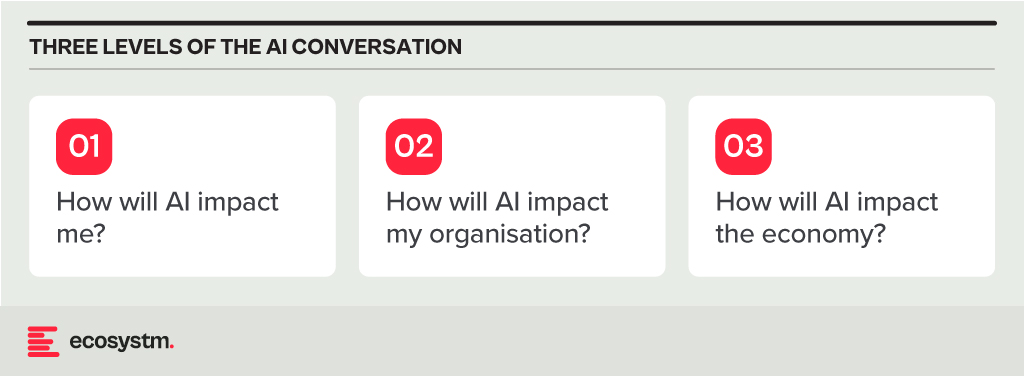
The Impact of AI on Individuals
AI is likely to impact people a lot! You might lose your job to AI. Even if it is not that extreme, it’s likely AI will do a lot of your job. And it might not be the “boring bits” – and sometimes the boring bits make a job manageable! IT helpdesk professionals, for instance, are already reporting that AIOps means they only deal with the difficult challenges. While that might be fun to start with, some personality types find this draining, knowing that every problem that ends up in the queue might take hours or days to resolve.
Your job will change. You will need new skills. Many organisations don’t invest in their employees, so you’ll need to upskill yourself in your own time and at your own cost. Look for employers who put new skill acquisition at the core of their employee offering. They are likelier to be more successful in the medium-to-long term and will also be the better employers with a happier workforce.
The Impact of AI on Organisations
Again – the impact on organisations will be huge. It will change the shape and size of organisations. We have already seen the impact in many industries. The legal sector is a major example where AI can do much of the job of a paralegal. Even in the IT helpdesk example shared earlier, where organisations with a mature tech environment will employ higher skilled professionals in most roles. These sectors need to think where their next generation of senior employees will come from, if junior roles go to AI. Software developers and coders are seeing greater demand for their skills now, even as AI tools increasingly augment their work. However, these skills are at an inflection point, as solutions like TuringBots have already started performing developer roles and are likely to take over the job of many developers and even designers in the near future.
Some industries will find that AI helps junior roles act more like senior employees, while others will use AI to perform the junior roles. AI will also create new roles (such as “prompt engineers”), but even those jobs will be done by AI in the future (and we are starting to see that).
HR teams, senior leadership, and investors need to work together to understand what the future might look like for their organisations. They need to start planning today for that future. Hint: invest in skills development and acquisition – that’s what will help you to succeed in the future.
The Impact of AI on the Economy
Assuming the individual and organisational impacts play out as described, the economic impacts of widespread AI adoption will be significant, similar to the “Great Depression”. If organisations lay off 30% of their employees, that means 30% of the economy is impacted, potentially leading to drying up of some government and an increase in government spend on welfare etc. – basically leading to major societal disruption.
The “AI won’t displace workers” narrative strikes me as the technological equivalent of climate change denial. Just like ignoring environmental warnings, dismissing the potential for AI to significantly impact the workforce is a recipe for disaster. Let’s not fall into the same trap and be an “AI denier”.
What is the Solution?
The solutions revolve around two ideas, and these need to be adopted at an industry level and driven by governments, unions, and businesses:
- Pay a living salary (for all citizens). Some countries already do this, with the Nordic nations leading the charge. And it is no surprise that some of these countries have had the most consistent long-term economic growth. The challenge today is that many governments cannot afford this – and it will become even less affordable as unemployment grows. The solution? Changing tax structures, taxing organisational earnings in-country (to stop them recognising local earnings in low-tax locations), and taxing wealth (not incomes). Also, paying essential workers who will not be replaced by AI (nurses, police, teachers etc.) better salaries will also help keep economies afloat. Easier said than done, of course!
- Move to a shorter work week (but pay full salaries). It is in the economic interest of every organisation that people stay gainfully employed. We have already discussed the ripple effect of job cuts. But if employees are given more flexibility, and working 3-day weeks, this not only spreads the work around more workers, but means that these workers have more time to spend money – ensuring continuing economic growth. Can every company do this? Probably not. But many can and they might have to. The concept of a 5-day work week isn’t that old (less than 100 years in fact – a 40-hour work week was only legislated in the US in the 1930s, and many companies had as little as 6-hour working days even in the 1950s). Just because we have worked this way for 80 years doesn’t mean that we will always have to. There is already a move towards 4-day work weeks. Tech.co surveyed over 1,000 US business leaders and found that 29% of companies with 4-day workweeks use AI extensively. In contrast, only 8% of organisations with a 5-day workweek use AI to the same degree.
AI Changes Everything
We are only at the beginning of the AI era. We have had a glimpse into the future, and it is both frightening and exciting. The opportunities for organisations to benefit from AI are already significant and will become even more as the technology improves and businesses learn to better adopt AI in areas where it can make an impact. But there will be consequences to this adoption. We already know what many of those consequences will be, so let’s start having those grown-up conversations today.

AI tools have become a game-changer for the technology industry, enhancing developer productivity and software quality. Leveraging advanced machine learning models and natural language processing, these tools offer a wide range of capabilities, from code completion to generating entire blocks of code, significantly reducing the cognitive load on developers. AI-powered tools not only accelerate the coding process but also ensure higher code quality and consistency, aligning seamlessly with modern development practices. Organisations are reaping the benefits of these tools, which have transformed the software development lifecycle.

Impact on Developer Productivity
AI tools are becoming an indispensable part of software development owing to their:
- Speed and Efficiency. AI-powered tools provide real-time code suggestions, which dramatically reduces the time developers spend writing boilerplate code and debugging. For example, Tabnine can suggest complete blocks of code based on the comments or a partial code snippet, which accelerates the development process.
- Quality and Accuracy. By analysing vast datasets of code, AI tools can offer not only syntactically correct but also contextually appropriate code suggestions. This capability reduces bugs and improves the overall quality of the software.
- Learning and Collaboration. AI tools also serve as learning aids for developers by exposing them to new or better coding practices and patterns. Novice developers, in particular, can benefit from real-time feedback and examples, accelerating their professional growth. These tools can also help maintain consistency in coding standards across teams, fostering better collaboration.
Advantages of Using AI Tools in Development
- Reduced Time to Market. Faster coding and debugging directly contribute to shorter development cycles, enabling organisations to launch products faster. This reduction in time to market is crucial in today’s competitive business environment where speed often translates to a significant market advantage.
- Cost Efficiency. While there is an upfront cost in integrating these AI tools, the overall return on investment (ROI) is enhanced through the reduced need for extensive manual code reviews, decreased dependency on large development teams, and lower maintenance costs due to improved code quality.
- Scalability and Adaptability. AI tools learn and adapt over time, becoming more efficient and aligned with specific team or project needs. This adaptability ensures that the tools remain effective as the complexity of projects increases or as new technologies emerge.
Deployment Models
The choice between SaaS and on-premises deployment models involves a trade-off between control, cost, and flexibility. Organisations need to consider their specific requirements, including the level of control desired over the infrastructure, sensitivity of the data, compliance needs, and available IT resources. A thorough assessment will guide the decision, ensuring that the deployment model chosen aligns with the organisation’s operational objectives and strategic goals.
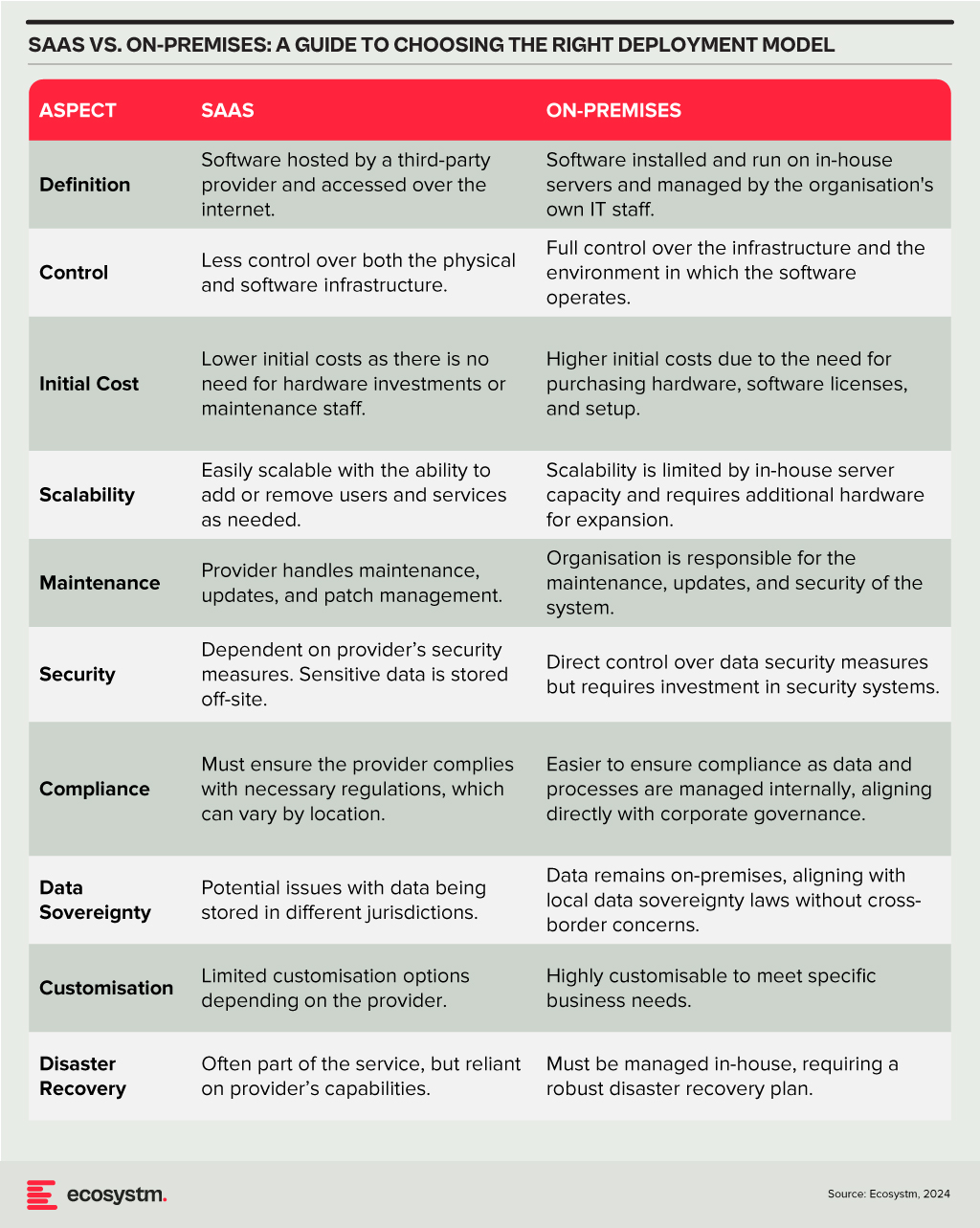
Technology teams must consider challenges such as the reliability of generated code, the potential for generating biased or insecure code, and the dependency on external APIs or services. Proper oversight, regular evaluations, and a balanced integration of AI tools with human oversight are recommended to mitigate these risks.
A Roadmap for AI Integration
The strategic integration of AI tools in software development offers a significant opportunity for companies to achieve a competitive edge. By starting with pilot projects, organisations can assess the impact and utility of AI within specific teams. Encouraging continuous training in AI advancements empowers developers to leverage these tools effectively. Regular audits ensure that AI-generated code adheres to security standards and company policies, while feedback mechanisms facilitate the refinement of tool usage and address any emerging issues.
Technology teams have the opportunity to not only boost operational efficiency but also cultivate a culture of innovation and continuous improvement in their software development practices. As AI technology matures, even more sophisticated tools are expected to emerge, further propelling developer capabilities and software development to new heights.















